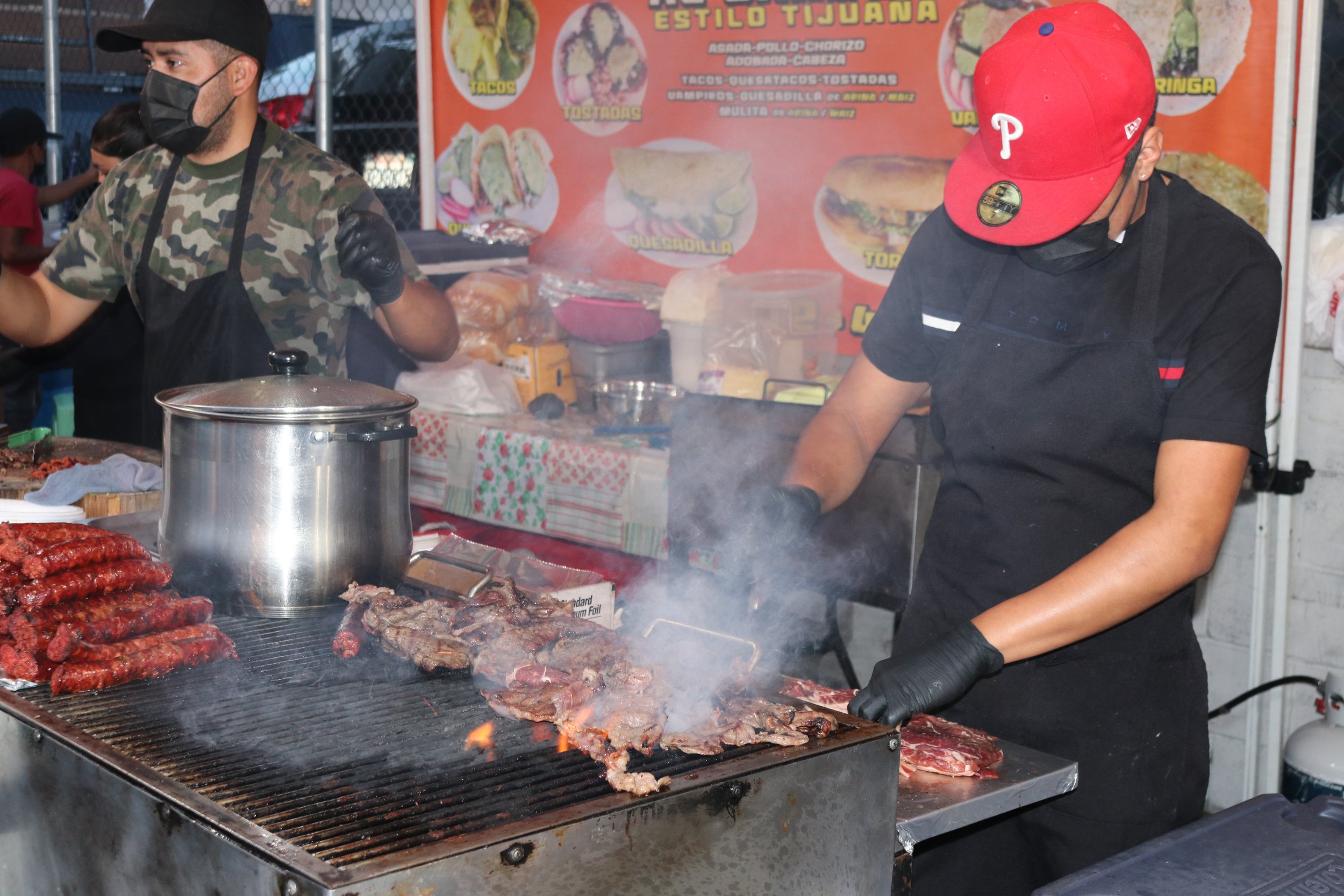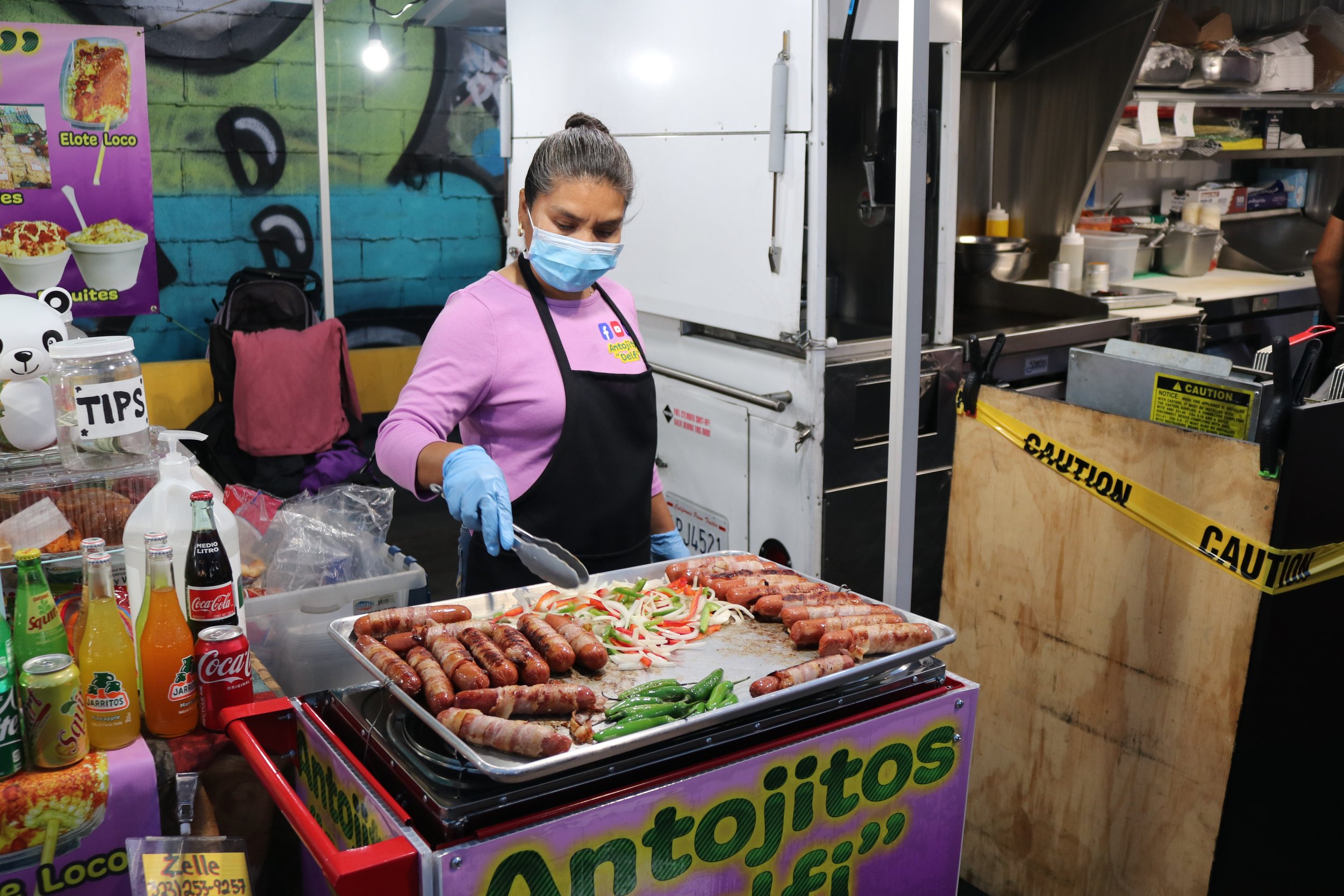Street Vending…it’s Complicated
Hit play now to enjoy the visual components and hear the full story.
Street vendor at the Alameda Night Market selling Mexican candies.
In September of 2018, SB 946 or the Safe Sidewalk Vending Act was approved by the Los Angeles City Council. The bill aimed to legalize street vending, it was a decades long battle that seemed like it was finally coming to an end. But this bill only introduced a staggering array of new regulations and complications for an already struggling vending community
The Safe Sidewalk Vending Act was met with open arms as the years spent advocating for a change in the treatment of street vendors came into fruition. But, this welcomed change soon soured. While the act did carve a relatively easy road for non-food vendors, such as flower vendors and clothing vendors, the same could not be said for food vendors. The bill was passed with a list of regulations. Limitations to the hours of operation, extensive sanitary conditions, and expensive permits were just some of the many consequences of the bill.
“While it decriminalized the activity of street vending, it didn't really like set any kind of like state standards for how local governments should engage with street vending and what kind of programs they can develop and things like that. So they really left it up to every county, every city, every jurisdiction to develop what they saw fit.” - Marco Covarrubias
Why is it so hard for vendors to meet regulation?
To fully understand how stringent these rules are for street food vendors, it’s important to note that they are compliant to the California Retail Food Code, it’s 141 pages of material that was written before the legalization of street vending. The food code breaks down hygienic practices, food safety requirements, equipment sanitization, water and plumbing needs, necessary food facilities, along with other various food operation knowledge. The California Retail Code was written for food trucks and brick-and-mortar establishments, rules that are much easier to meet when considering the space and resources these facilities have.
To legally sell food, mobile vendors must adhere to a combination of meticulous design standards so they may operate out of their cart legally. The issue that arises is for the last three years that street vending has been legalized there have been no standardized, county approved carts that can fit on the sidewalks, any other designs that meet county code are massive and street driven. Leaving vendors to sell food with no permits, out of makeshift carts.
Vendors grilling various meats.
Trompo with pastor meat used to make tacos al pastor
Another hurdle.
“In the city of LA, the permitting fee was like $549, because of the pandemic and other pushes that we made and others made to lower the permit fees, they temporarily reduced the permit to about $291. But even that was still really high for street vendors who make on average, you know, in their own income, you know, $15,000 an entire year, right, they're not operating like with the revenue streams that other you know, brick and mortar businesses may be operating under, and they make a lot less revenue. So that's when you take that into account, the permitting fee is much too high for them to operate.” - Covarrubias
“It is a community of hardworking people. And everybody's just hustling, you know, just hustling to be to feed our families… I think that's what it is, the reward is getting people to enjoy what you're making.” - Maria Flores
Flores and her husband standing in front of their product — flans.
Mobile food vendor selling carnitas tacos.
Daniel Reyes, owner of El Bote, a food stand specializing in Mexican-American fusion foods.
Richard Gomez wanted to initially create a cart where vendors would be able to cook the classic LA style hotdog but very quickly realized the logistical issues involved. A cooking cart would require a three-compartment sink, a refrigeration unit for the raw bacon, an enclosure to chop the onions and peppers, hot water, a wastewater tank, and the ability to provide electrical power to the cart. A cart of this design would be too heavy to push around the sidewalks of Los Angeles.
The classic LA style hotdog — usually prepared with a bacon wrapped sausage loaded with peppers, jalapeños, and caramelized onions,
“I was at the health department maybe about 40 times. People are trying to sell all sorts of things. So it was difficult to come up with one cart design because of all the issues.” - Richard Gomez
Gomez’s design landed on a tamale cart, something that would meet the Health Department’s standards due to the pre-packaged nature of tamales. It took about three years but his design was approved by the Los Angeles Health Department in April of 2021.
Gomez is now working to help corn vendors also known as eloteros. He’s planning on designing a cart that would allow them to sell corn out of a permitted cart.
Rendering of Gomez’s Tamalero cart, Courtesy of Revolution Carts.
A vendor’s fruit salad.
What’s next?
Mobile food vendors now have a county approved cart instead of operating out of un-permitted carts but, it can only be used for tamales, leaving others such as hotdog, fruit, and taco vendors behind. One solution may be SB 972, introduced by senator Lena Gonzalez on February 10, 2022
The bill would make permitting more accessible and cut down on all of the necessary equipment needed as of now, such as a three compartment sink. The bill would also allow for an expansion of how vendors operate. For example, currently, fruit carts must sell pre-cut, pre-packaged fruits but this bill would allow them to cut their fruit on site as long as they are properly educated about which fruits are safe to dice on their carts. This legislation was created with the intention of making the California Retail Food Code applicable to street food vendors.
Written and produced by Susie Zuniga








